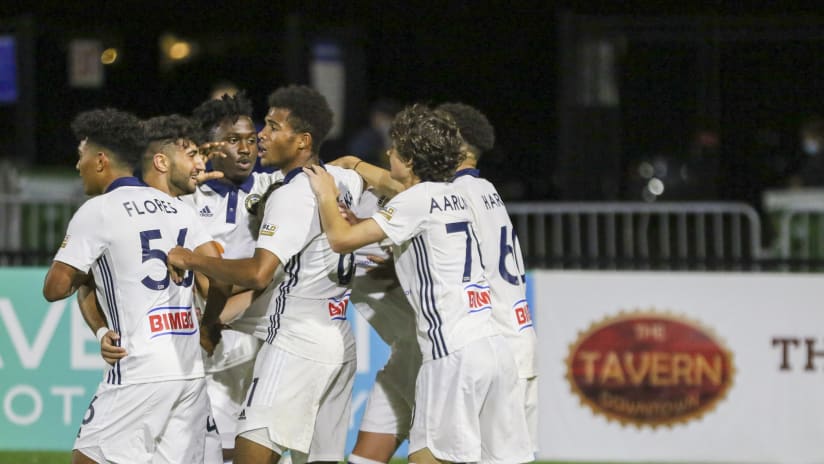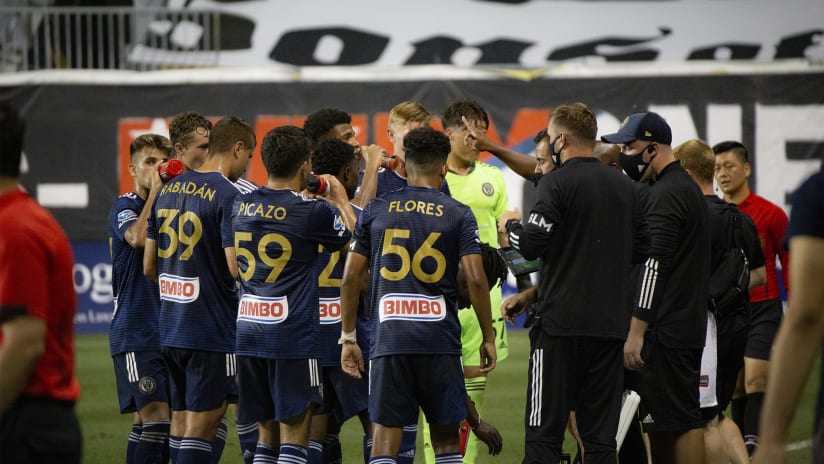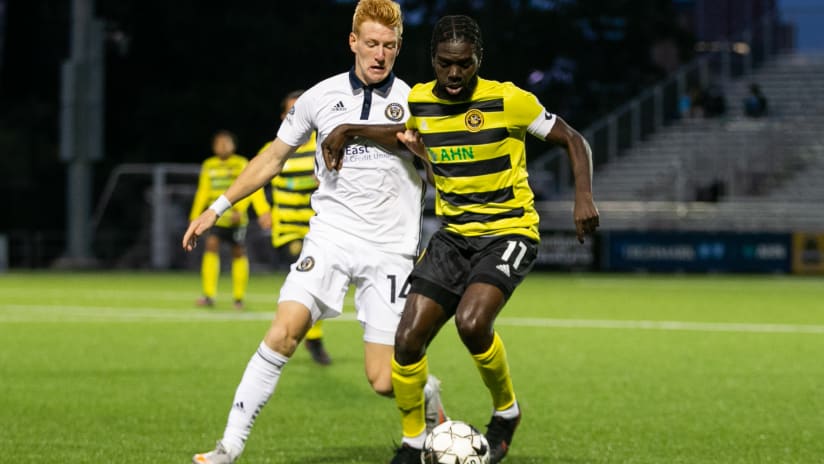Steel FC’s Playoff Appearances Sowing Seeds For the Future
In 2016, Bethlehem Steel FC debuted in USL as Philadelphia Union’s affiliate club. As now, Brendan Burke was the head coach and James Chambers was in the team (though, unlike now, not as much as he wanted to be). 2016 also happened to be the year Earnie Stewart took over as Sporting Director of Philadelphia Union, and his vision of Steel didn’t entirely mesh with the makeup of the roster at the time. As Chambers has said multiple times recently, the situation was not what he and others expected it to be, and it wasn’t until he and Burke had a sit down that he came to embrace his role as a veteran leader on a development-driven team.
A third thing occurred in 2016: Philadelphia Union made the MLS Playoffs for the first time since 2011. Steel, meanwhile, didn’t record a victory after mid-July and, tied for the fewest wins in the Eastern Conference ended the year seven points out of the playoff picture in USL.
The script flipped a year later. Burke, a coach that could likely do the soccer developmental equivalent of turning goat piss into gasoline (to steal Blues Brothers’ Band member Donald “Duck” Dunn’s term), took the growing talents of Auston Trusty, Mark McKenzie, Derrick Jones, and others — including Cory Burke — dropped Chambers’ intensity and dedication to ball movement in the center of it all, and guided Steel to the playoffs. The Union, lacking a playmaker, missed the postseason.
This year, for the first time, both clubs put it all together.
The success, as was the plan, has been symbiotic. Bethlehem’s 2017 run gave Trusty and others the chance to experience big games at the professional level, and it proved that Cory Burke, despite being a bit further along the age curve than most prospects, had the mental fortitude to continue developing.
The Union’s 2018 run has meant limited opportunities for top young guns like Anthony Fontana, Derrick Jones, and Matt Real, as well as long gaps between games for Marcus Epps and Fabian Herbers. Many of those players have found a home and a chance to showcase their abilities with Steel. Jones is one of the few players all season to give FC Cincinnati real problems, and Fontana was able to feel his way around the No. 10 role while still keeping his box-to-box skills fresh. Real has been singled out for praise by Brendan Burke as the left back has focused on becoming a more complete player, and across the formation right back Olivier Mbaizo has been downright dominant at times.
Academy players like Brenden Aaronson, Tonny Temple, and Ben Ofeimu have shown well, and young goalie Tomas Romero recently got his first 2018 start in net in a key late season game. Other relative unknowns like Drew Skundrich, Faris, and Michee Ngalina have followed in Cory Burke’s footsteps, stamping their authority onto decisive contests, as Ngalina did in Steel’s final regular season match with the game-winner.
Through it all, Chambers has been the rock at the heart of Bethlehem’s success, showing his midfield partners — often Jones, Aaronson, and Fontana — how to practice like a professional every day, and what that requires in terms of personal dedication and intensity.
The final piece of the puzzle that has allowed both the Union and Steel FC to make the postseason, though, is the club’s reliance on a single system of play. There has been so much movement up and down the chain that players often have no time to ‘bed in’ or learn their role. When Ofeimu jumps from the academy U19s to the back line of the Steel, he needs to know the ‘Forward first’ mentality when playing the ball and how to handle a high line against an aggressive opponent. Others, like Faris and Ngalina, are given a necessary runway as they learn the system for the first time, but someone moving up, like Aaronson, or moving down, like Herbers, must be able to step in with little or no time to develop cohesion. Aaronson, Herbers, and others rarely even get a chance to practice with Steel before games, so their understanding of their roles comes down to the consistency of the system and Burke’s ability to communicate any match-specific goals. This might sound easy, but only five MLS-II clubs made the USL postseason, and only one other team — Red Bulls II — did so while playing a young lineup all year. What the Union and Steel FC have achieved has not been easy, and it has placed a lot on the shoulders of the players that many expect to take the mantle of first team starters in the coming years.
So when Steel play this weekend, tune in on ESPN+ and enjoy it. You’ll see many of those faces in blue and gold before you know it. And when they pull on the Union jersey, those young prospects will know what the postseason feels like, and they will do anything to get back to it.













